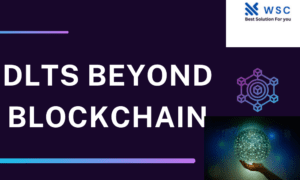Introduction
In the ever-expanding world of blockchain technology, scalability remains a significant concern. This post delves into two prominent scaling solutions: the Lightning Network and sharding. We’ll explore the challenges associated with scaling blockchain networks and the innovative solutions provided by these two approaches.
Understanding the Scaling Problem
Blockchain scalability is hindered by factors like slow transaction processing and network congestion. As cryptocurrencies gain popularity, addressing these issues becomes crucial for mainstream adoption.
Lightning Network – Lightning-Fast Transactions
The Lightning Network is a second-layer solution designed to alleviate Bitcoin’s scalability issues. It enables off-chain transactions, reducing congestion and speeding up Bitcoin transactions significantly.
Sharding – Parallel Processing Power
Sharding is a technique primarily used in blockchain platforms like Ethereum. It involves dividing the network into smaller shards, allowing parallel processing of transactions. This enhances throughput and reduces latency.
Challenges in Implementing Lightning Network
While the Lightning Network offers great promise, it also faces challenges, including routing complexities, channel liquidity management, and security concerns. Overcoming these obstacles is vital for its success.
Overcoming Sharding Hurdles
Sharding, too, encounters challenges like data synchronization across shards and maintaining security. Solutions involving advanced cryptographic techniques and robust consensus algorithms are being developed to tackle these issues.
The Future of Scalability
As blockchain technology continues to evolve, the Lightning Network and sharding represent crucial steps toward achieving scalability. Their success will determine the extent to which blockchain can support mainstream applications.
Conclusion
In the quest for blockchain scalability, the Lightning Network and sharding offer unique solutions. While each faces its set of challenges, they hold immense potential in addressing the scalability woes that have long plagued blockchain networks. With continued innovation and development, the future of blockchain scalability looks promising.
Practice Code (Sample code related to blockchain scalability):
# Sample Python code for simulating a Lightning Network transaction
class LightningChannel:
def __init__(self, capacity):
self.capacity = capacity
self.balance_A = capacity // 2
self.balance_B = capacity // 2
def make_payment(self, sender, receiver, amount):
if sender == "A" and self.balance_A >= amount:
self.balance_A -= amount
self.balance_B += amount
return True
elif sender == "B" and self.balance_B >= amount:
self.balance_B -= amount
self.balance_A += amount
return True
else:
return False
# Example usage:
channel = LightningChannel(10)
if channel.make_payment("A", "B", 3):
print("Payment successful.")
else:
print("Payment failed due to insufficient balance.")
Check our tools website Word count
Check our tools website check More tutorial





Hello, im noob 🙂